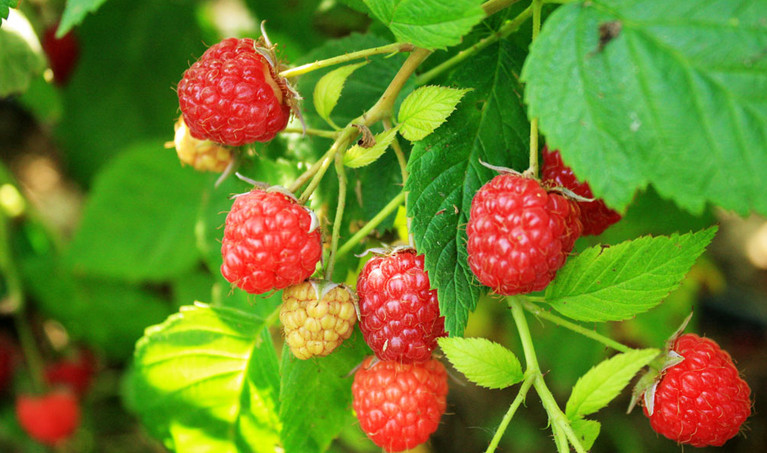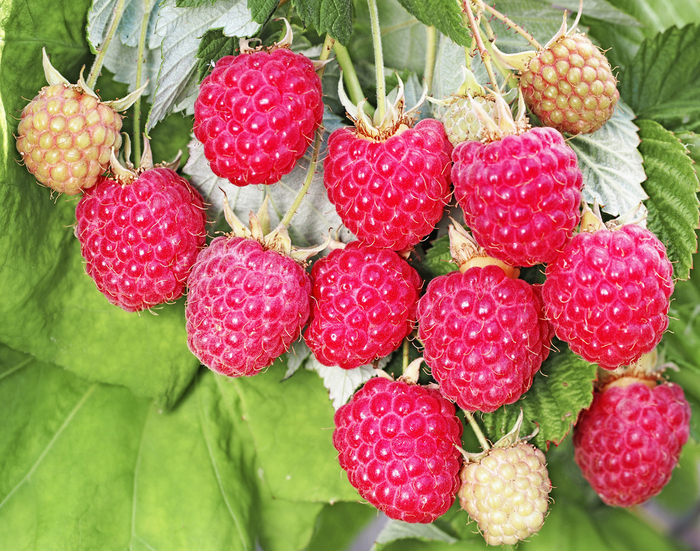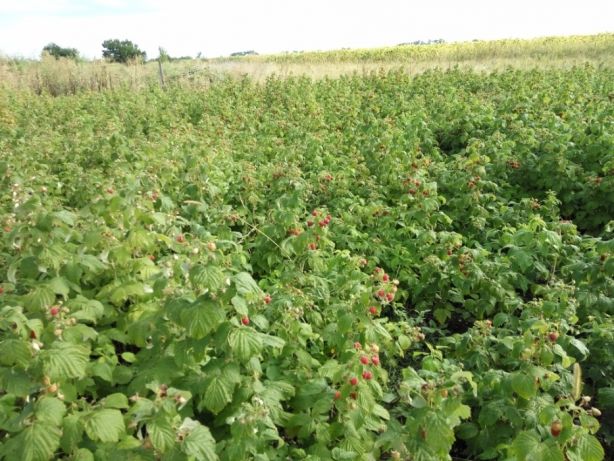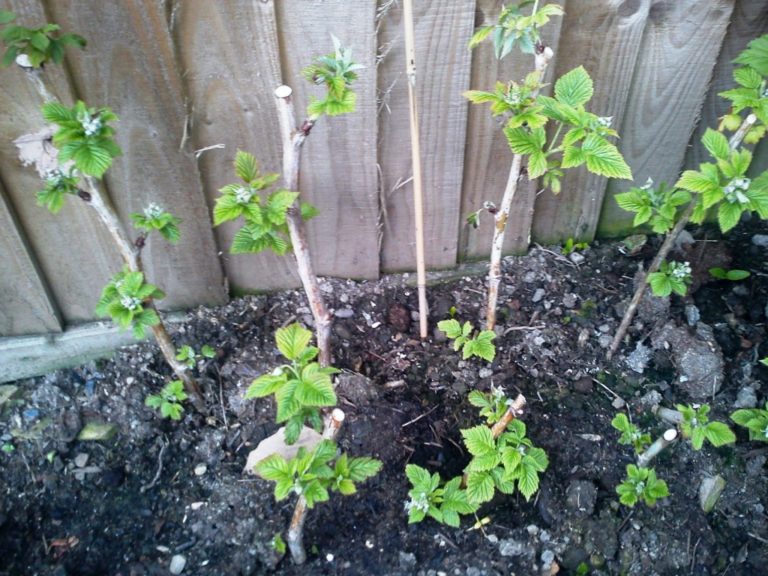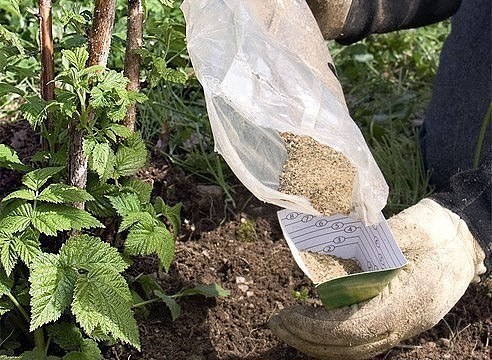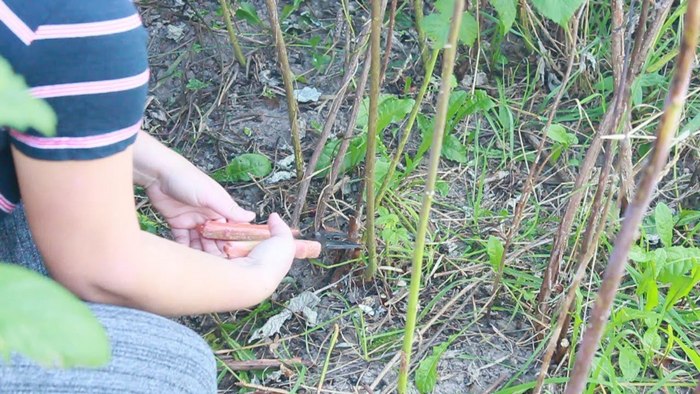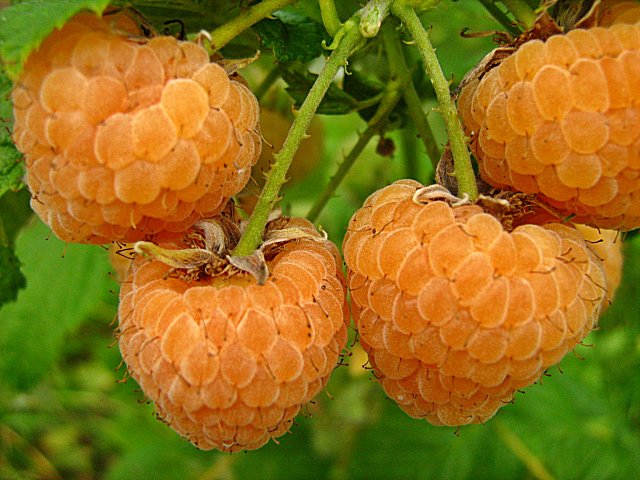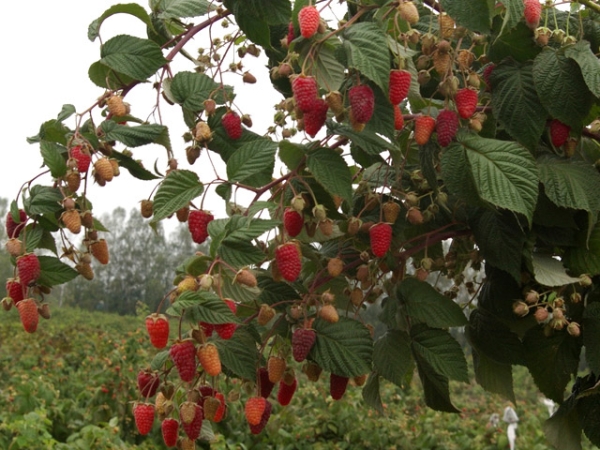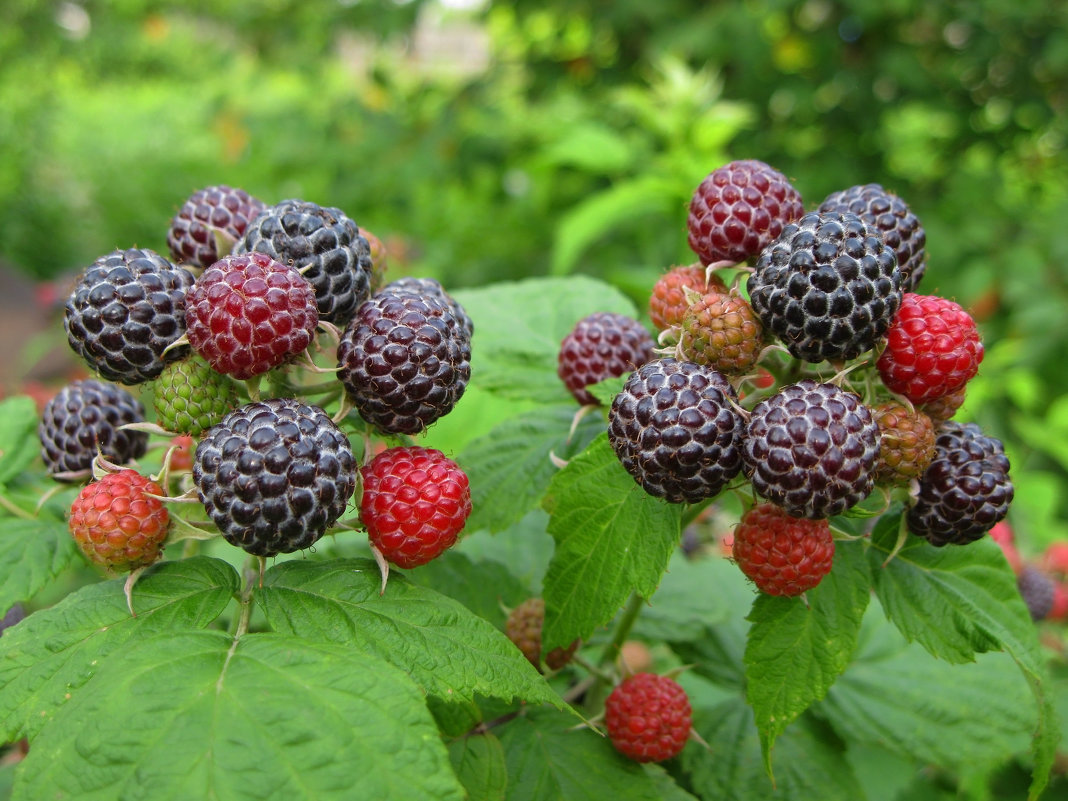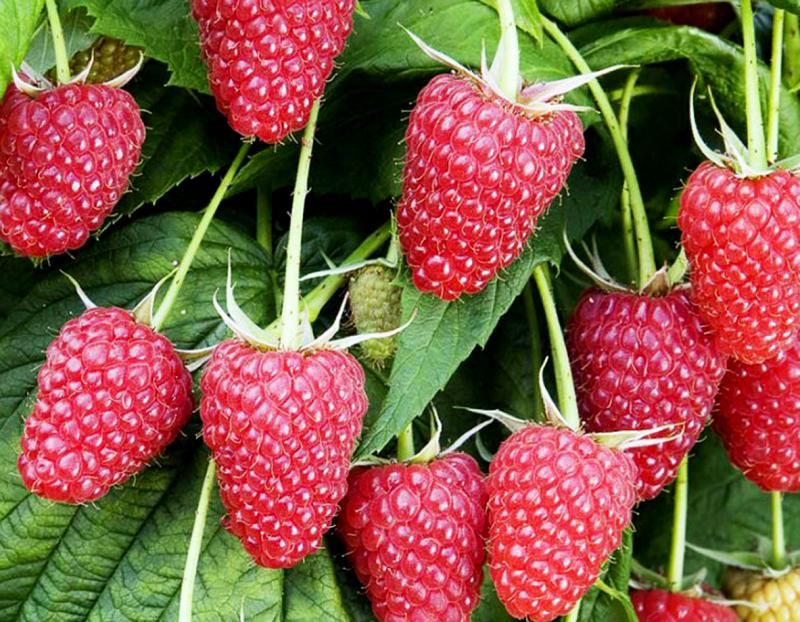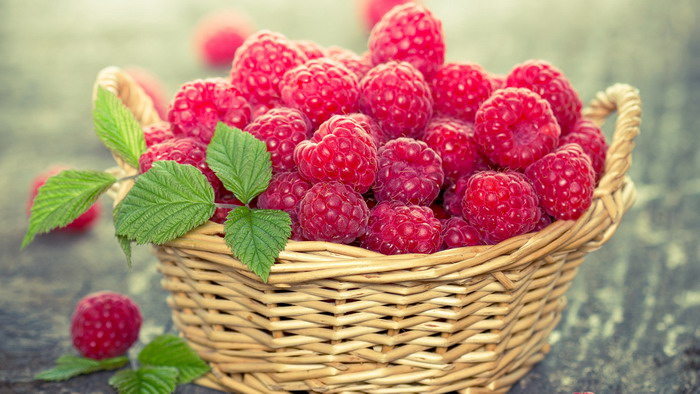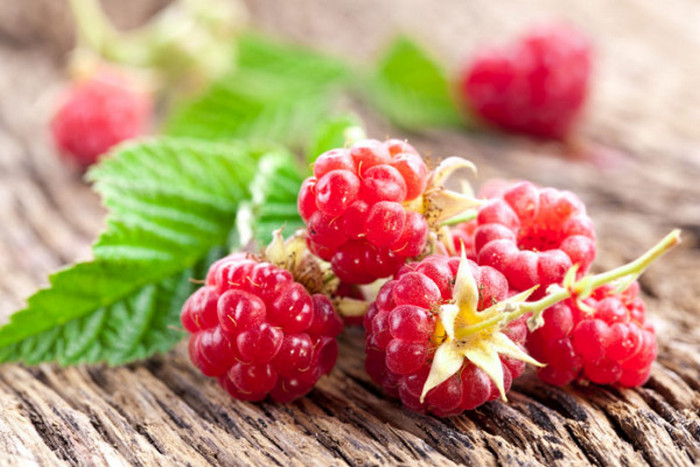Content:
Raspberry Polana is a relatively new berry variety that is gradually gaining popularity in Russia. This variety appeared by crossing two well-known varieties: Zeva and Heritage. The berry is a medium-sized fruit, the weight of which varies from 3 to 5 grams. Dark green leaves on the outside have a white tint on the back and are arranged, alternating one after another.
Raspberry Polana: variety description
The plant is characterized by a very high ability to form shoots, as a result, one bush can create more than 50 shoots at a time. Powerful shoots have weakly pronounced thorns and reach a length of up to 2 meters.
The stems of the plant are strong and tough, reaching a width of 4 centimeters at the base, and the berries are dense, cone-shaped. A rich, intensely crimson color with a slight lilac shade gives the berry a spectacular appearance. Raspberries can grow up to 1.8 meters in height and independently, without additional support, withstand the weight of a bountiful harvest.
The main advantages of the Polyana raspberry variety are:
- frost resistance;
- high productivity;
- early ripening and long fruiting period;
- ease of reproduction;
- resistance to pests and diseases.
Important! When choosing a variety, it is necessary to take into account some disadvantages: the ability to dry out and grow root shoots.
Specifications
Raspberry Polyana differs from other species in early fruiting, and increased productivity is the main advantage of this variety. With a favorable combination of circumstances and proper care, one raspberry bush brings about 4 kilograms of berries. In addition, Polana is actively cultivated in an industrial environment - 1 hectare of land planted with raspberry bushes harvests more than 10 tons of large and sweet berries.
The flavor of the berries can vary from sweet to sour, depending on the environment. So, sunny weather has a positive effect on taste, and by the end of the ripening season, the sweetness disappears due to the abundance of cloudy days.
The ripening period begins at the end of July and ends closer to mid-October. However, fruiting times can change - each climate has its own effect on the growth of raspberries. At this time, the berries are found on all branches of the bush, including the top of the plant.
Optimal climatic conditions for growing polana raspberries are located in the middle southwest. Despite the fact that this variety can easily tolerate cold weather conditions, it is recommended to plant the plant in a warm area in order to increase the sweetness of the fruit.
Soils, optimal for planting, are black earth and sandy loam composition.
Interesting. The plant stands out for its excellent winter hardiness and is able to withstand temperatures up to -32 degrees.
Reproduction of raspberries occurs using the following actions:
- Planting green shoots is a versatile method suitable for any climatic conditions;
- Planting root cuttings is the most effective planting option;
- Sowing with seeds - this method is relevant for propagation in open space, allows the plant to reproduce naturally in the natural world.
Additional Information. Berries can be stored for a long period of time and do not deform during transportation, which allows them to keep their original appearance after transportation.
Planting and caring for Polana raspberries
In order to get a good bountiful harvest from a plant, it is important to take care of correct and timely planting.
Raspberry Polyanka does not require special care, but to achieve maximum yield, simple rules should be followed:
- The most suitable period for planting seedlings in open ground is late autumn;
- Raspberry remontant Polana prefers intense sunlight, so it is important to plant bushes out of the shade of trees;
- The variety can successfully germinate in any kind of soil, however, sod-podzolic soil devoid of acidity will bring great benefits to the plant;
- Raspberry Polana prefers moisture, but excessive stagnation of water can lead to disease and death of the plant;
- In case of drought, it is important to water the bushes once every two days, in order to avoid overdrying the roots;
- When choosing a planting site for raspberry bushes, it is necessary to provide protection from strong wind currents, which will help protect the crop from falling.
Note! When selecting seedlings for planting in an open area, you should monitor the condition of the roots - they should not be damaged or be overdried. If necessary, you need to place the roots in water for 2 hours, this will provide an opportunity for the roots to receive the necessary moisture.
Stages of planting seedlings in the ground:
- Create planting sites, focusing on a depth of about 50 centimeters, and maintain a distance between shoots of one meter;
- Apply fertilizer to one third of the planting site, after mixing it with a layer of earth;
- Place the roots in a clay solution to ensure maximum tenacity with the soil when planting;
- When planting in the ground, it is important to carefully spread the roots of the plant;
- Cover the seedling with soil to the ground;
- Thoroughly spill with water, loosen the soil and sprinkle with mulch, which can be peat or compost.
Polana's raspberry seedlings are planted either in dug holes or in created trenches, depending on the desired result.
Landing in trenches:
- clear the soil from debris, dig trenches;
- place the film between the rows and place the pegs for pulling the ropes;
- fertilize;
- plant seedlings one meter apart;
- cover to the ground with earth and secure the planting with watering.
Planting raspberries in holes:
- create pits 35 centimeters in diameter;
- add fertilizer to the ground;
- prepare a fence around the edges of the landing;
- plant seedlings, maintaining a distance of one meter;
- watering and leveling the soil.
Top dressing, pruning, pest control
This type of polana raspberry prefers a calcareous soil, therefore, if necessary, the soil should be replenished with a lime mound once a season.
In the fall and spring, you should feed the bushes with manure or compost, using one bucket per plant. During the growing season, it is important to fertilize raspberries with fresh manure.
Important information! When planting, do not use nitrogen-containing fertilizers to avoid oxidation.
In the autumn, after harvesting, circumcision is carried out. When carrying out the procedure, you should leave the trim above the ground at least 8 centimeters. This will allow the branches to grow in the next season.
Note! Circumcision is permissible only with the onset of the first frost, so that the nutrients can get to the roots.
There are relatively few pests that attack this varietal species. Raspberry aphids are common. It is located on the back of the leaf, as well as on the tops of the shoots. Aphids suck out cell sap, causing the leaf to curl. Affected plant fragments are treated with Aktara, Karbofos, Confidor preparations. Phosphorus-potassium dressings will help prevent the occurrence of raspberry aphids. It is also important to regularly remove weeds and root growth.
The raspberry beetle is not uncommon.Insects eat buds and leaf buds, impairing the productivity of the bushes. It is recommended to treat the plants with Karbofos at the time of active budding. 10 liters of water will require 60 g of the drug.
Spider mites can also "occupy" young bushes. Insects entwine them with a thin web, suck the juice from the leaves. Because of this, the greens dry out and curl. It is best to cope with such a problem with Anti-Mites, Agrovertin or Akarin, which should be used in a strict dosage (all parameters are indicated in the instructions).
There is a kind of Polana raspberry, which also stands out for its large fruit size and powerful shoots - Poranna dew. This species has a rich yellow berry color, excellent taste with a slight sourness and unpretentious care. Raspberry Poran is highly regarded by gardeners for the colossal size of the harvest and the unique flavor of the berry.
Seedlings and seeds of different varieties of raspberries can be purchased quickly and conveniently through the Kufar gardening site.
Having learned the characteristics of the Palana raspberry berry and everything about it, it becomes clear that this is a fairly new unique variety, characterized by early fruiting, high productivity and excellent taste. These advantages make this type of raspberry more and more popular in the horticultural field.
